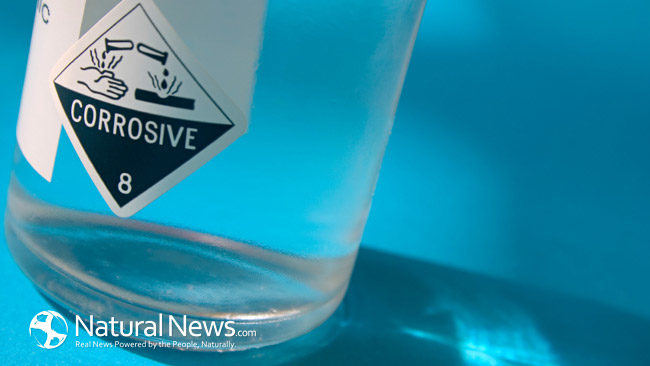I have to ask: If you need personal protective equipment to handle food…Can you assume it’s safe to eat? I don’t think avocados are corrosive, you don’t necessarily need splash goggles to slice into a watermelon, or a dust respirator to throw some nutritional yeast on your popcorn. But again, the FDA seems to still recognize that Blue 1, petroleum derivatives, are safe a a food substance.
Whatever the chemical may be, how is it that the toxicology studies almost always sugget it is poison and the FDA continues to insist it’s G.R.A.S.? I always stress, regardless the amounts in food or how low the toxicity may be, it’s still laced with synthetic, cancer producing, tumor growing chemicals substances. Also, there should be a general concern when the Food and Drug Administration states “Sum of volatile matter and chlorides and sulfates not more than 15.0 percent.” This is clarified before the toxic “ingredient list” in Blue #1
General research:
Blue #1
FD&C Blue No. 1 or Brilliant Blue, 9 is a water-soluble coloring used in many baked goods, beverages, dessert powders, candies, cereals, drugs, and other products. Blue 1 received FDA approval for general use in foods and ingested drugs in 1969
Contains Lead and Arsenic among many other toxic chemicals
Test tube study found inhibition of nerve-cell development. Blue 1 may not cause cancer, but confirmatory studies should be conducted. The toxicological properties of this substance have not been fully investigated (And yet it’s still allowed in food)
Blue 1 is classified as an allergen. One abstract study on mice reported kidney tumors. The dye can cause hypersensitivity reactions.
Blue 1 is not susceptible to breakdown by intestinal microbiota, but up to 5% is absorbed via the GI tract However, Blue 1 caused chromosomal aberrations in two studies (Ishidate, Senoo et al. 1974; Hayashi, Matsui et al. 2000).
Rowland performed a chronic toxicity/carcinogenicity study on Blue 1 in 48 males/group and 50 females/group of mice. The mice were administered 0, 0.015, 0.15, or 1.5% Blue 1 in their diets for only 80 weeks. Seven out of the surviving 30 male mice in the 0.15% group had kidney tumors compared to only 1 kidney tumor in the 44 surviving controls. Females in the 2% group had a significant decrease in terminal mean body weight (15%) and decreased survival compared to controls.
Blue 1 might possibly have potent effects, and it might take only a small absorbed amount to affect a child’s brain development
A review by the IARC of a study (published only in abstract form) states that male mice had a statistically significant increased incidence of kidney tumors in the mid-dose group.
Also, in an in vitro test, Blue 1 inhibited neurite growth and acted synergistically with L-glutamic acid, suggesting the potential for neurotoxicity. That is particularly worrisome for fetuses and babies under the age of six months whose blood-brain barrier is not fully developed. Further research needs to be conducted before this dye can be considered safe.
Genotoxicity studies
- Cytogenetics Assay; Chromosomal Aberrations; Positive (Hayashi, Matsui et al. 2000)
- Chromosomal aberration test, CHL cells; Chromosomal aberrations; 5 mg/ml; Positive (Ishidate, Sofuni et al.1984)
Special Remarks on Chronic Effects on Humans:
- May cause cancer based on animal data. May affect genetic material (mutagenic)
- Skin: May cause skin irritation
- Eyes: May cause eye irritation.
- Inhalation: May cause respiratory tract irritation.
- Ingestion: May cause digestive tract irritation. May affect behavior.
Personal Protection: Splash goggles. Lab coat. Dust respirator. Be sure to use an approved/certified respirator or equivalent. Gloves
Personal Protection in Case of a Large Spill: Splash goggles. Full suit. Dust respirator. Boots. Gloves. A self contained breathing apparatus should be used to avoid inhalation of the product. Suggested protective clothing might not be sufficient; consult a specialist BEFORE handling this product.
These products are carbon oxides (CO, CO2), nitrogen oxides (NO, NO2…), sulfur oxides (SO2, SO3…). Some metallic oxides.
Federal and State Regulations:
- Massachusetts RTK: FD&C Blue 1
- New Jersey: FD&C Blue 1
- TSCA 8(b) inventory: FD&C Blue 1
Other Regulations:
EINECS: This product is on the European Inventory of Existing Commercial Chemical Substances.
DSCL (EEC):
- R33- Danger of cumulative effects.
- S24/25- Avoid contact with skin and eyes.
This is dye week, stay tuned for more dyes throughout the week including lake dyes
References
- http://www.sciencelab.com/msds.php?msdsId=9924014
- https://www.spectrumchemical.com/MSDS/F3070.PDF
- http://cspinet.org/new/pdf/food-dyes-rainbow-of-risks.pdf
- http://www.gpo.gov/fdsys/pkg/CFR-2013-title21-vol1/xml/CFR-2013-title21-vol1-sec74-101.xml
- http://www.law.cornell.edu/cfr/text/21/74.101
- http://www.accessdata.fda.gov/scripts/cdrh/cfdocs/cfcfr/CFRSearch.cfm?fr=74.101
Legal G.R.A.S http://www.law.cornell.edu/cfr/text/21/184.1
G.R.A.S. List http://www.accessdata.fda.gov/scripts/fcn/fcnNavigation.cfm?rpt=eafusListing
Some extra reading material





